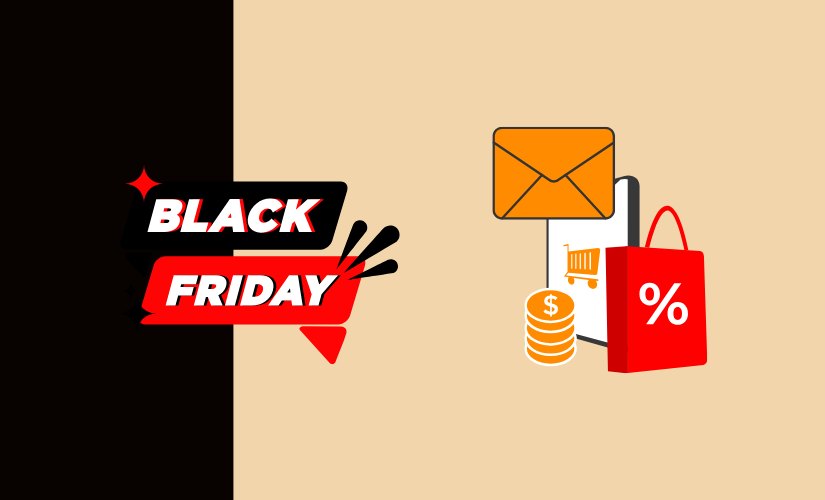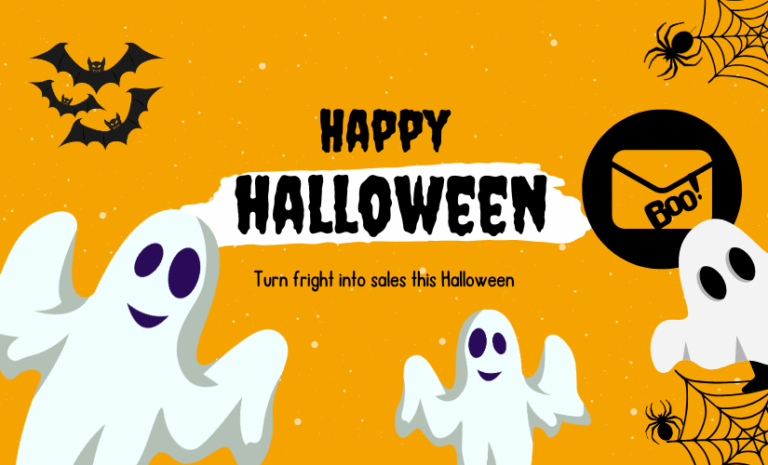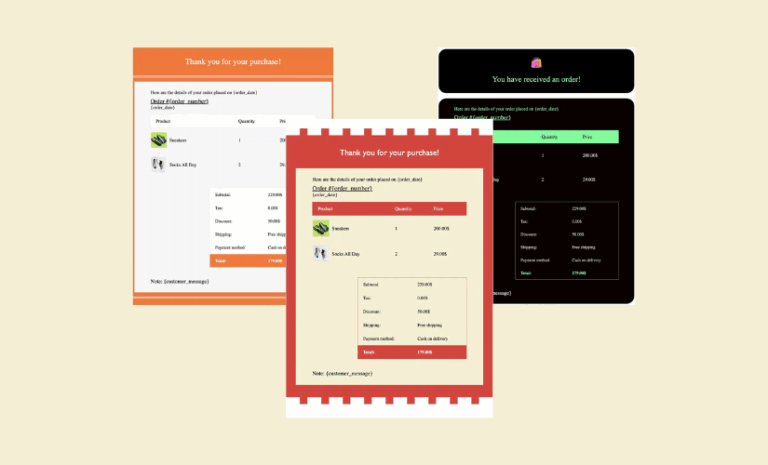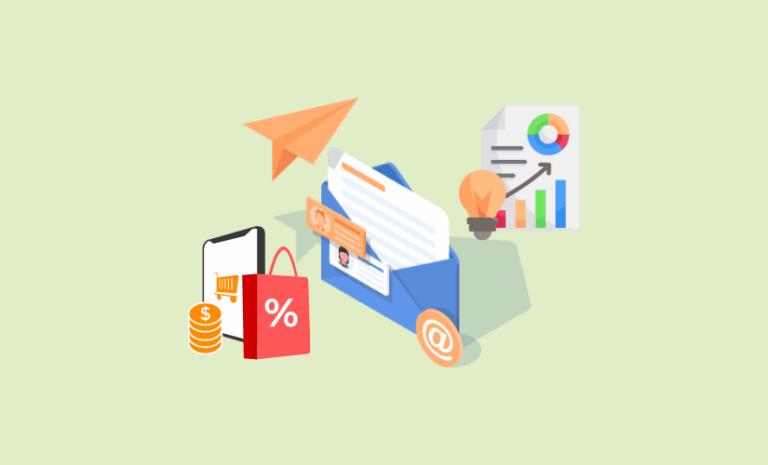Black Friday is the most competitive shopping event of the year, and email remains one of the most powerful tools to capture attention and drive conversions. However, with every brand fighting for space in your customer’s inbox, it’s no longer enough to simply send a discount code. To stand out, you need a carefully planned, high-converting strategy that combines timing, personalization, creative design, and urgency.
WooCommerce ‘s latest survey shows 73% of merchants say the BFCM season drives more than 20% of their annual revenue.
This guide covers proven Black Friday email marketing strategies that will help you attract more clicks, increase sales, and turn seasonal shoppers into long-term customers.
State of Black Friday and Cyber Monday shopping
Here’s a more detailed and well-sourced table summarizing the state of Black Friday and Cyber Monday shopping in 2024, with insights on performance, trends, and key drivers:
| Metric | 2024 Value | 2023 Value | YoY Change |
|---|---|---|---|
| Black Friday (US online sales) | $10.8 B | $9.8 B | +10.2% |
| Cyber Monday (US online sales) | $13.3 B | $12.4 B | +7.3% |
| Cyber Week (Thanksgiving–Cyber Monday) | $41.1 B | – | +8.2% |
| Holiday Season (Nov 1–Dec 31) | ~$240.8 B | – | +8.4% |
Black Friday Email Marketing Strategies: Boost Sales with High-Converting Campaigns
Black Friday is one of the most competitive times of the year for e-commerce brands. With inboxes overflowing with promotions, it’s no longer enough to send a simple discount email and hope for sales. To truly capture attention, your campaigns need to be creative, timely, and tailored to your audience’s needs.

That’s where the right strategies come in. By using proven email marketing tactics, you can cut through the noise, engage your subscribers, and drive them to take action. Below, we’ll explore some of the most effective Black Friday email marketing strategies that will help you boost conversions and maximize revenue.
Start Early with Teasers and Strategic Timing
One of the most common mistakes brands make is waiting until Black Friday morning to send their first campaign. By then, your customers’ inboxes are already overflowing. Successful brands build anticipation well before the actual day.
Start by launching teaser campaigns that hint at upcoming deals without giving away all the details. These “mystery offers” keep subscribers curious and eager for more. Reward loyal subscribers with early access or VIP-only deals, which not only makes them feel valued but also spreads out the shopping traffic instead of overwhelming your website on one day.
You can also use countdown timers in your emails to show when the sales begin, keeping the excitement building. Extending the campaign beyond just Friday — into Cyber Monday or even the week after — ensures you capture customers who may have missed the initial wave.
Bottom line: Start early, stay consistent, and use a phased approach: pre-Black Friday teasers, day-of promotions, and post-Black Friday follow-ups.
Segment Your Audience for Hyper-Personalization
Sending the same generic discount email to your entire list is a quick way to get ignored. Shoppers are looking for relevance — offers that actually match their interests and needs. That’s where segmentation comes in.
By dividing your audience into smaller groups, you can deliver tailored content that speaks directly to them. For example, first-time visitors might respond best to a warm welcome offer, while loyal customers could receive exclusive early-bird access or a bonus gift. If you know what product categories your subscribers browse most, send them deals from those categories instead of overwhelming them with irrelevant promotions.
Segmentation also allows you to identify your high-value customers and reward them with bigger discounts, free shipping, or bundle deals that make them feel appreciated. Meanwhile, less engaged subscribers may respond better to “wake-up” campaigns that reintroduce them to your brand with irresistible offers.
Bottom line: Personalization increases open rates, boosts click-throughs, and makes your brand stand out during a time when inboxes are packed with cookie-cutter promotions.
Craft Subject Lines That Demand Attention
Your subject line is your first chance — and sometimes your only chance — to get noticed. During Black Friday, customers are scanning through dozens of promotional emails, and yours needs to spark immediate interest.
Strong subject lines are short, direct, and compelling. They often include urgency (“Ends Tonight”), exclusivity (“VIP Early Access”), or excitement (“Biggest Sale of the Year”). Emojis can add personality and visual flair, but they should be used sparingly to avoid looking spammy.
Don’t overlook the preview text either — this secondary line is prime real estate for adding extra context or reinforcing urgency. Together, the subject line and preview text should create curiosity and motivate the reader to open the email right away. Check these black friday email subject lines for higher open rates.
Bottom line: A powerful subject line cuts through the noise, grabs attention, and gets your foot in the door before your competitors.
Create Scarcity and Urgency
Scarcity and urgency are psychological triggers that push shoppers to act quickly. When customers believe that a deal is limited or time-sensitive, they’re far less likely to hesitate.
You can build urgency with phrases like “Last Chance,” “Only Hours Left,” or “Sale Ends at Midnight.” Adding countdown timers in your emails is another effective way to make the ticking clock feel real. Scarcity can also be emphasized by showing limited stock notifications (“Only 5 left in stock”) or exclusive deals available only to the first 100 buyers.
These tactics work because they trigger FOMO — the fear of missing out. But be careful not to overuse them or create false scarcity, as that can hurt trust. Always ensure your urgency messaging is honest and backed up by your actual sales policies.
Bottom line: When used strategically, scarcity and urgency drive faster decision-making and higher conversion rates.
Optimize for Mobile Shoppers
More than half of all email opens happen on mobile devices, and many Black Friday purchases are completed directly from smartphones. If your emails aren’t mobile-friendly, you risk losing a huge portion of potential sales.
A mobile-optimized email should be clean, simple, and responsive to any screen size. Keep your text short and scannable, and make your CTA buttons large enough to tap easily. Place your most important message and offers near the top of the email so they’re visible without scrolling.
Heavy image-based designs may look good on desktop, but can slow down load times on mobile — which often leads to abandoned carts. Focus on fast-loading templates that balance visuals with concise text and clear calls to action.
Bottom line: Designing with mobile in mind ensures a seamless experience for shoppers and prevents you from losing sales to poor formatting.
Increase Average Order Value with Bundles and Upsells
While Black Friday attracts bargain hunters, it’s also an opportunity to increase average order value (AOV). With the right strategies, you can encourage customers to spend more in each transaction.
Bundle deals are a great way to move more products while giving customers a sense of added value. For example, offering “Buy 2, Get 1 Free” or creating curated gift bundles makes it easier for shoppers to justify larger purchases.
Upsells and cross-sells are another powerful approach. Suggest related items based on what a customer is buying — for instance, accessories for a laptop or skincare products that pair well together. Free shipping thresholds (like “Spend $75 to get free shipping”) are also highly effective at nudging customers to add more to their carts.
Bottom line: Black Friday shoppers are already primed to spend — guiding them toward bundles, upsells, and free shipping thresholds helps you maximize revenue per order.
Automate Key Email Flows
Black Friday moves fast, and manual emails won’t capture every opportunity. Automation ensures your campaigns run smoothly and cover every touchpoint, even while you focus on other tasks.
Some essential automated flows include:
- Abandoned cart emails that remind shoppers of items they left behind. Adding urgency or offering a small discount can help recover those sales.
- Last-chance reminders are sent in the final hours of your sale to push customers who are still undecided.
- Post-purchase thank-you emails that express appreciation, suggest related items, and encourage repeat purchases.
- Re-engagement flows that target customers who didn’t buy during Black Friday with Cyber Monday or holiday offers.
Automation allows you to stay connected with your audience at critical moments, increasing the likelihood of conversions.
Bottom line: Automated flows ensure no lead is lost, giving you a safety net that captures sales around the clock.
Use Clean, Visual, and Branded Templates
Design matters just as much as the message. A cluttered or confusing email can turn shoppers away, even if the offer is compelling.
The most effective Black Friday emails are visually bold, but still easy to read. Use high-quality product images, strong headlines, and clear CTA buttons that stand out. Keep the layout simple, with enough white space to avoid overwhelming your audience.
Brand consistency is key — your Black Friday emails should still reflect your unique style, colors, and tone. Adding elements like social proof (customer reviews, ratings, or testimonials) can also increase trust and reduce hesitation.
Bottom line: A polished and branded design makes your emails more memorable and builds confidence in your offer.
Track, Measure, and Optimize in Real Time
Black Friday campaigns shouldn’t run on autopilot. The brands that succeed are those that monitor performance closely and adjust in real time.
Track key metrics like open rates, click-through rates, conversion rates, and revenue per email. If a subject line isn’t performing, test a new variation mid-campaign. If one customer segment is converting better than others, shift more of your efforts toward them.
Also, pay attention to device performance; if your desktop numbers are strong but your mobile lags, it could signal an issue with your mobile optimization. Use the insights from these campaigns to inform not only your current promotions but also your long-term email strategy.
Bottom line: Real-time optimization helps you maximize results during the fast-paced Black Friday season and ensures you learn valuable lessons for the future.
Final Thoughts
Black Friday email marketing strategies are all about preparation, relevance, and execution. By starting early, segmenting your audience, writing irresistible subject lines, creating urgency, optimizing for mobile, leveraging automation, and continuously measuring performance, you can run high-converting campaigns that drive sales and build customer loyalty.
This year, don’t just join the inbox rush — stand out, captivate, and convert.
Sources:



